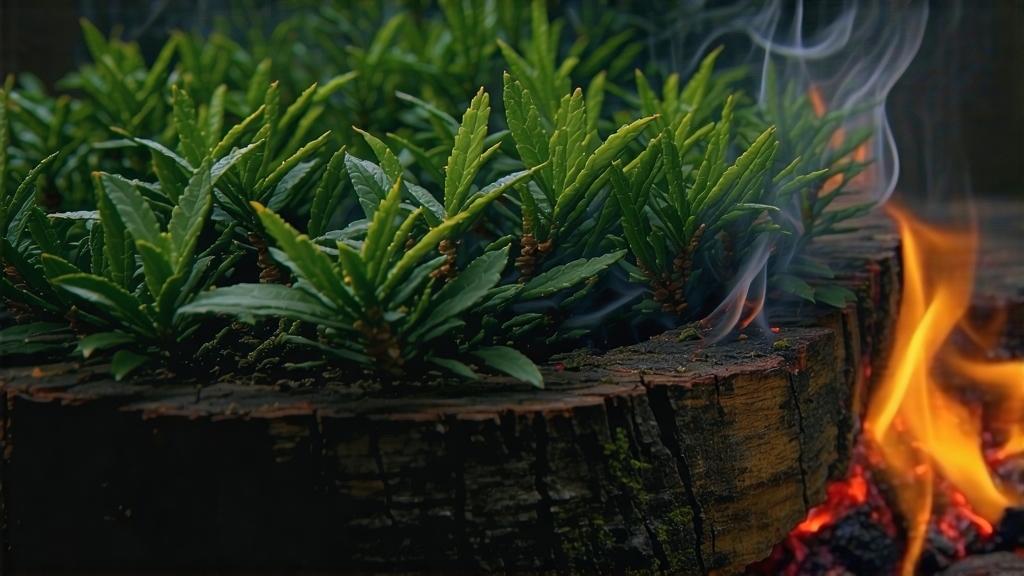
Long before English breakfast tables knew the word “black tea,” caravans loaded with slender, pitch-dark leaves left the granite gorges of northern Fujian. Their destination was Amsterdam, then London, Paris, and St Petersburg. The cargo was Lapsang Souchong—today the oldest documented black tea on earth and the prototype that taught Europe what tea could become once green leaves were persuaded to oxidise fully. In the local Minbei dialect the tea is called “zhengshan xiaozhong”: zhengshan meaning “original mountain,” the protected core of the Wuyi massif; xiaozhong denoting the “small cultivar” leaves selected from the bushes that cling to the cool, mist-locked slopes. International tongues twisted the name into “Lapsang Souchong,” but the leaf inside the chests remained unchanged for almost four centuries—a fragrant witness to the moment Chinese tea masters first harnessed smoke, fire and time.
History: From Ming Frontier to London Drawing Rooms
The accepted chronicle begins around 1568 in the village of Tongmu, a cluster of dark-timber houses wedged between the Tongmu River and the sheer cliffs of the Wuyi Nature Reserve. A passing army unit commandeered a tea workshop during the late-Qingming harvest. To dry the leaves quickly for the troops, workers spread them over pine fires. The accidental smoke penetration was judged delicious; the technique was repeated, refined, and exported. By 1604 Dutch merchants had shipped the first cases to Europe, where the novelty of a fully oxidised, copper-liquored, long-keeping “bohea” (Wuyi) tea eclipsed the green cakes previously treasured. When Catherine of Braganza brought a chest to Charles II’s court in 1662, Lapsang became the taste of aristocracy; its price soon surpassed silver. The East India Company copied the style in Assam and Ceylon, but never the pine aroma. Thus the original Tongmu leaf—still produced inside a national park buffer zone no wider than 600 hectares—remains a legally protected geographical indication, harvested only by residents whose families pre-date the 1949 revolution.
Micro-Terroir: Why Only Tongmu Smells Like Tongmu
The Wuyi range is a 550-million-year-old fault block lifted high enough to trap a subtropical monsoon, yet cool enough to host temperate fir and camphor forests. Morning fogs linger until noon, filtering sunlight to a soft, even glow. The soil is a stony, slightly acidic regolith of weathered tuff and granite that drains instantly, forcing tea roots to dive deep for minerals. Within this macro-climate, Tongmu sits in a narrow gorge where night temperatures can drop 10 °C below the valley floor, concentrating aromatics in the leaf. Six indigenous cultivars—most notably Cai Cha, Xiao Ye Zhong and the scarce Qi Zhong—have adapted to this stress by thickening their cuticles, creating precursors that translate into malt, longan and pine resin notes once oxidised and smoked.
Plucking Rules: One Bud, Three Leaves, Noon Deadline
Authentic zhengshan is picked only between Qingming and the beginning of summer. Standard grade uses the “zhong kai mian” pluck—bud plus first three leaves—when the third leaf is still half-unfolded, ensuring a balance of polyphenols and amino acids. Leaves must reach the withering loft within two hours; any longer and the cool mountain air begins to ferment them unevenly. Because the government limits the amount of fresh leaf removed from the reserve, annual production rarely exceeds 5 000 kg, roughly the output of a single large Fujianese oolong factory in one week.
Craft: Smoke as Seasoning, Not Mask
Western tea literature often caricatures Lapsang as “tar in a cup,” a reputation earned by later, coarser copies smoked merely to cover flaws. The Tongmu original is subtler: smoke is the final brushstroke on a canvas already painted by meticulous oxidation. The workflow follows five steps:
-
Withering: Leaves are spread 3 cm deep on bamboo screens suspended over a river-level corridor. Pine logs smoulder 1.5 m below, but their smoke is ducted away; only radiant heat and airflow remove moisture. Six to eight hours reduces leaf weight by 60 % and softens cells for rolling.